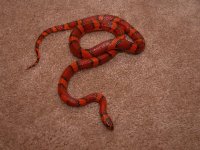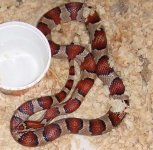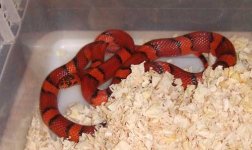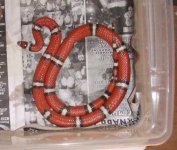Drizzt80
Dakota Corns
In an effort to gain more knowledge for myself, I would love if those individuals that are identifying hybrids visually would come here and list these "hybrid markers" that appear to be more obvious than I can pick up on. For example, to date, I have asked the question (many times) on what exactly visually identifies a creamsicle, and have yet to get definite specific answers to that question. :shrugs:
I'd appreciate it if we could start a list here, NOT DEBATE THE ISSUE, but start a list here of what is visually marking corns as being hybrid. If you want to debate the issue, please use any of the other number of threads that are already doing it!!
Please list the species being mixed into corns to make the hybrid as well as the visual identifiers of that specific cross when making your post. I would prefer for the list to have definite things listed (scale count, pattern, belly scutes etc.), as opposed to "kinda sorta" and "sometimes" examples. Please (as necessary) add disclaimers to the accuracy of said markers.
Thank you, and hopefully this thread can have some academic benefit.
D80
I'd appreciate it if we could start a list here, NOT DEBATE THE ISSUE, but start a list here of what is visually marking corns as being hybrid. If you want to debate the issue, please use any of the other number of threads that are already doing it!!
Please list the species being mixed into corns to make the hybrid as well as the visual identifiers of that specific cross when making your post. I would prefer for the list to have definite things listed (scale count, pattern, belly scutes etc.), as opposed to "kinda sorta" and "sometimes" examples. Please (as necessary) add disclaimers to the accuracy of said markers.
Thank you, and hopefully this thread can have some academic benefit.
D80




